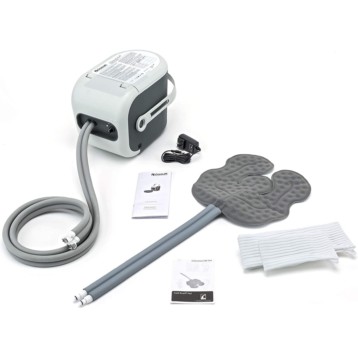|
Traditional tests for cervical cancer – a form of cancer caused by specific strains of the human papillomavirus virus, or HPV – involve a long, drawn-out manual process requiring twenty different steps, and highly trained personnel in formal laboratory settings must conduct the tests. The MicroActive tool reduces that process to two simple steps requiring little training and performed on a device roughly the same size as a desktop computer.
Tests for cervical cancer and HPV can be tricky – doctors can cure most forms of HPV easily and the it does not lead to cancer. It is not sufficient to simply identify the virus; tests must identify the specific strain of HPV and whether the virus is active. The MicroActive tool looks for messenger RNA or mRNA coded for E6/E7 proteins. Such mRNA reduces the amount of other proteins in the body, proteins that tend to suppress tumor growth. The presence of E6/E7 proteins is a good indicator of cervical cancer. Testing for them instead of using the current cell-based tests in common use should significantly reduce false positives.
A standard cervical smear tissue sample is extracted from patients and then added to a syringe already containing a mixing agent. Doctors then apply the resulting mixture directly to a disposable microfluidic chip. They then insert the chip into the portable laboratory which uses biomarkers to test for the proteins indicating the presence of cancer. Current tests only use two biomarkers, but the chips have sixteen channels, each capable of using a different biomarker keyed to specific proteins. Test results are available in approximately two hours, rather than the several weeks required for more traditional testing methods.
TFOT previously reported on other new methods of cancer detection including optical traps that can detect cancers without a microscope, a new contrast agent designed to help improve tumor detection in MRI scans, a new way to scan blood to find cancer in its very earlier stages, infrared sensors that can detect cancer markers in the breath of patients, and radio sensors that can help detect esophageal cancer.
Read more about the MicroActive cervical cancer detection system on its project website.











